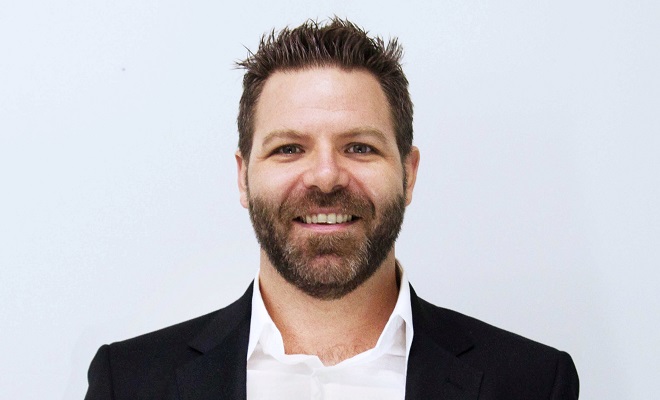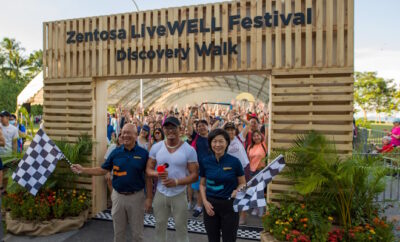
Insights + interviews
In Conversation With Chiropractor Dr Dave McClintock
Dr Dave McClintock, Resident Chiropractor at Natural Healings Parkway Parade tells us more about the common back problems that active agers face.
Having recovered from a serious snow skiing accident, in which he sought help through traditional allopathic therapies, such as painkillers and physiotherapy, Dr Dave McClintock realised that what he had initially done was not the route to regaining his health, fitness and vitality and thus decided to try chiropractic alternatives and quickly experienced the improvements he had been searching for. From his personal transformation through chiropractic treatments, it dawned upon him that he was
meant to help others achieve their optimal health, functioning and performance by becoming a chiropractor. We find out more from the man himself.
AA: How do we identify spinal injury symptoms from other body injuries? What are the risks and implications involved?
DM: Pain, symptoms, dysfunction or inability to perform certain activities or body movements is your body’s way of telling you there is a problem that needs to be fixed.
Aches and pains are warning signal:
- Pain is a poor indicator of health since it is the last sign to show up when damage has already been done.
- Misalignments in the neck can cause headaches/migraines, vision problems, numbness and weakness into the arms/hands, sinus issues, dizziness, etc.
- A misalignment in the mid back can cause breathing and heart complications, rib pain, shoulder tension.
- A lower back misalignment can cause numbness and tingling down into the legs and feet, digestive and reproductive problems, bowel and bladder dysfunction and low back pain.
AA: What are some common back pains amongst the active agers – disc degeneration, lower back pains, spinal decompression etc.?
DM: As people get older they start to develop lower back pain, numbness/tingling and weakness into the legs and feet, knee pain, foot pain, inability to walk long distances, inability to squat, difficulty going up or down stairs, digestive problems, etc.
AA: What are the common causes behind spinal injuries amongst the active agers?
DM: There are quite a number of them actually, they are:
- Falls, accidents, injuries – Occurrences such as falls, accidents, and injuries can lead to “wear and tear” of the spine.
- Incorrect stance when lifting and carrying heavy objects.
- Bad posture – having a good posture allows our body weight to be evenly distributed when we walk, stand, sit or engage in various activities. Conversely, poor posture such as slouching or hunching and, straining our necks and backs at awkward and unnatural angles can cause the spine to contort itself in an unnatural way. This creates and places undue pressure on our nerves and associated localised muscles, giving rise to aches and pains. Over a prolonged period of time, our spines can get “acclimatised” and perpetually “locked” into such compromised unnatural positions and form, leading to long-term chronic health conditions including dysfunction and increased friction between joints thereby accelerating the degenerative process.
- Repetitive minor stressors from everyday activities like going to the market, household activities such as cooking/cleaning, taking care of grandchildren, etc.
AA: What are some ways to strengthen the spine? – Exercise, rescue vitamins and nutrients?
DM: Certain supplements that can be added to your daily life to give you the joint support include: fish oil, magnesium, glucoasamine, calcium, vitamin D and collagen. Also, you should consume lots of fruits/vegetables to get natural fibre as well as drink plenty of water.
AA: When is the spinal injury an emergency?
DM: If a person is unable to move, a loss of sensation, and/or incontinence.
AA: What should one look out for when visiting a chiropractor and when should we seek one?
DM: The professionalism of the staff, a focused individualised corrective care plan and patient education. As stressors and traumas can happen/affect anyone and everyone, it would be beneficial for everyone to get their spines and nervous systems checked for interference/dysfunction and then be able to make educated decisions about what should be done to improve/maintain optimal spine and nerve health which in turn will improve one’s overall quality of life.
AA: What are some non-surgical procedures to take to address back pains?
DM: Chiropractic care is unlike surgery in that chiropractors work to correct patients’ spinal misalignments using non-invasive manual adjustments;this takes pressure off the nerves allowing all of the organs and tissues to function better, as well as improving the spinal alignment and joint mobility which decreases pain and improves overall quality of life. In order to provide the most accurate, individualised corrective care plan, we start with a thorough consultation and physical exam followed by an analysis of any necessary x-rays. As a result, patients have a specialised care plan that will get them the best results as quickly as possible. It is especially important for active agers to consider the importance of chiropractic care; because with age, many ailments and reduced functions begin to decrease quality of life. Chiropractic care can naturally decrease pain, improve body functions without the need for drugs or surgery; thus it can be a great option for preventive care.









